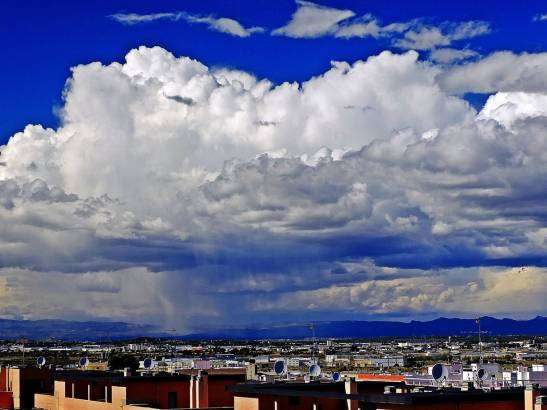A research team made up of professionals from the CSIC, the Universitat de València, and the Generalitat Valenciana has developed an innovative tool for monitoring extreme winds associated with storms in the Valencian Community. The application, called ‘Downburst MXO’, allows the real-time detection of these meteorological phenomena known as ‘downbursts’, thanks to the extensive network of over 700 weather stations managed by the Valencian Meteorology Association (AVAMET).
Extreme winds are considered a severe meteorological phenomenon, with intensities comparable to those of a tornado, which poses a serious risk to communities and infrastructure. In this context, the DOWNBURST project focuses on investigating the effects of global warming on the risk associated with these extreme winds in the Valencian Mediterranean region, aiming to improve their detection, attribution, and prediction in a scenario of climate change.
César Azorín, a scientist from the CSIC and project leader, has emphasized that preliminary results suggest that global warming could be increasing both the frequency and severity of downbursts. These phenomena are difficult to predict and can pose a danger not only to aviation safety but also to the spread of forest fires. Azorín emphasizes the importance of this new real-time monitoring service to enhance surveillance of downbursts and mitigate their immediate impacts.
The web application ‘Downburst MXO’ is freely accessible through the AVAMET, Climatoc-Lab, and the DOWNBURST project websites. It operates through an algorithm that constantly analyzes data obtained every ten minutes from AVAMET stations, identifying downburst phenomena based on abrupt changes in winds, temperature, humidity, precipitation, and atmospheric pressure. When the established criteria are met, the tool indicates the location of the downburst with a representative symbol.
Once an event has been flagged by the application, the owning meteorological station receives a notification to verify the authenticity of the phenomenon, possibly providing additional information about damage in the area, such as fallen trees or power lines, as well as images and videos. Each of these events is subsequently verified by the project team, which integrates them into a database dedicated to downbursts.
The application was recently presented at an event at the Casa de la Ciencia of the CSIC in València, where the value of meteorological observation by citizen science and cooperation between AVAMET and the CSIC in creating useful knowledge and services was highlighted.
With a system that is already operational, periodic updates are expected to improve its functionality and information, including the classification of downbursts according to their type (dry, wet, warm, etc.) and the automation of alerts for public and private entities interested in its use. The availability of a network like AVAMET is essential for observing phenomena that can occur at very local scales, affecting areas of less than four kilometers.
Source: MiMub in Spanish











